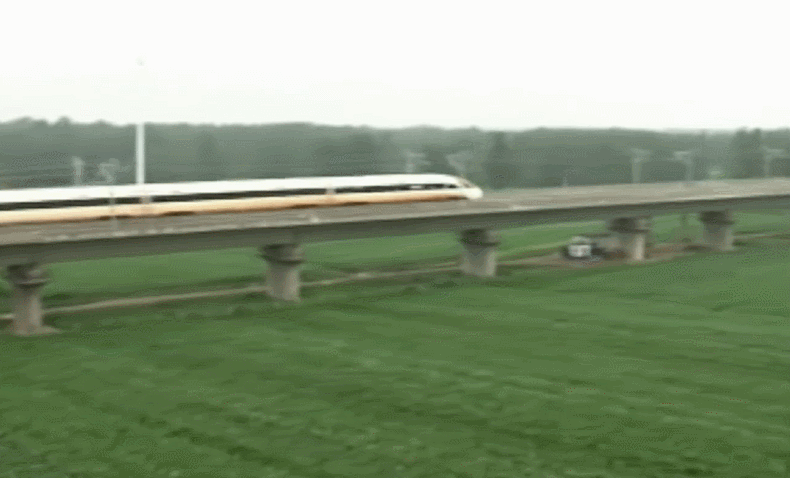On July 15, 2016, two China-standard EMU trains passed in opposite directions at 420 km/h in an experiment conducted by China Railway Corporation, setting a world record.
The experiment was carried out on the Zhengzhou-Xuzhou high-speed railway, and completed tests include China Standard EMU running energy consumption, vibration noise and dynamics properties of trains.
Huang Jin, an associate researcher of Locomotive & Car Research Institute of China Academy of Railway Sciences, was the team leader of this experiment.

Huang Jin, an associate researcher of Locomotive & Car Research Institute of China Academy of Railway Sciences. (Photo: CGTN)
Huang told CGTN that the main purpose of the experiment was to learn about the change rule of technical parameters of the continuity interval between 200-420 km/h and explore the characteristics of parameter variation above 400 km/h in order to better serve future technological advancement for Fuxing bullet trains.
"We formed a temporary team of more than 40 people, including experts in train traction, dynamics and vibration noise," said Huang.
The highest test speed of single train reached 428.6 km/h, and the passing speed reached 420 km/h during the experiment. Besides speed, another important achievement was the interconnection between the two trains.
"The two trains are produced by different manufacturers," Huang said, adding that trains from different manufacturers couldn't connect with one and other in the past.
"Now they can connect, and also reach 420 km/h. This is rare in other countries."
For research personnel like Huang, the most important significance of the experiment was the data they collected, which provided them a better understanding of Fuxing bullet trains.

On July 15, 2016, two China-standard EMU trains passed in opposite directions at 420 km/h in an experiment conducted by China Railway Corporation, setting a world record. (Gif: CCTV+)
"That was the first time for us to collect data above 400 km/h from a field test," he said. "This is very useful in terms of upgrading the current Fuxing trains and developing a new generation of a high-speed train."
The current highest operating speed for the Fuxing bullet trains is 350 km/h.
Huang said that the Automatic Train Protection (ATP), brake and traction devices are not designed for long-term use under a speed above 350 km/h. But they can handle short-term experiments.
The test speed of 420 km/h was decided after evaluation, which can meet engineers' demands of data collection, and ensure safety.
The lead engineer told CGTN that exploring high speed was only one task of the experiment; the focus was to go deep and refine the Fuxing's performance.
"It's for practical uses after all... it's meant to be used better and to better serve the passengers," said Huang.


